Is the euro now in a bull market?
Despite the turmoil in Europe, the euro is rallying against the dollar. John C Burford thinks this could just be part of something big. Here, he explains how to play a rising euro.
Outrageous as my headline sounds (or at least it did a fortnight ago when the EUR/USD was plumbing new depths, prior to the rapid 350-pip rally since), I believe I have a case for seriously asking this question. We'll get to that below.
But first, let's look at what's happened.
The pundits and experts currently have no explanation for this 'unexpected' turn, which flies in the face of all the 'fundamentals' that have been pouring out of the eurozone,
MoneyWeek
Subscribe to MoneyWeek today and get your first six magazine issues absolutely FREE

Sign up to Money Morning
Don't miss the latest investment and personal finances news, market analysis, plus money-saving tips with our free twice-daily newsletter
Don't miss the latest investment and personal finances news, market analysis, plus money-saving tips with our free twice-daily newsletter
This behaviour perfectly illustrates the danger of being married to an unyielding market stance that follows the crowd. This applies in particular to the currency markets.
It's vital to avoid following the herd
Why? Simply because while the EUR/USD became fixated on the euro's woes, it was ignoring the other side of the cross: the US dollar.
As traders, we must remember we are trading a cross rate like a see-saw. And see-saws swing up, and then down.
As we know, the US economy is not in great shape, despite all the recent 'good' news. Talk is of more QE operations from the Fed this year.
And yesterday, there was a big fall in the 30-year Treasury bonds yields shot up. Again, the market has been super-bullish for a long time, and this may well be a shot across the bows of the Fed. We may see short-term interest rates rise sooner, rather than later.
That is something to keep in mind for our future forecasts for asset prices later this year.
So does this mean the focus will now be swinging from the euro's problems to the dollar's, especially now that the US elections are coming up?
Certainly, I believe the market has probably taken the euro's problems on board after all, they have been bandied about ad infinitum. In other words, it's possible that the market has discounted the euro's problems.
If that's the case, then any 'good' news on the euro will result in huge short-covering. And that is what we are now seeing.
As I mentioned in my other euro articles this year, the market was primed for a strong rally. I based my 4 January forecast on the technical picture.
Of course, if I had been following the anti-euro crowd, I would still be short and hurting.
Trader tip: At important turning points, it seems suicidal to go against the crowd when the news is at its most gloomy. Most of us crave the security of being part of a like-minded group.
But to catch these turning points, you must step outside the crowd, stand back, and do your own analysis based on an honest appraisal of the situation ignoring the pleadings of the crowd.
We saw this at the gold top last year , if you were reading my articles at the time.
There seems to be no fundamental reason to go against the crowd it seems like falling in front of a fast-moving fully-loaded bus.
But if your technical analysis indicates this trade, then maybe the bus will swerve and miss you!
I have found that my best trades are entered when I feel the most anxious. Trust your analysis and keep disciplined.
Can the euro's rally continue?
OK, let's get to the charts:
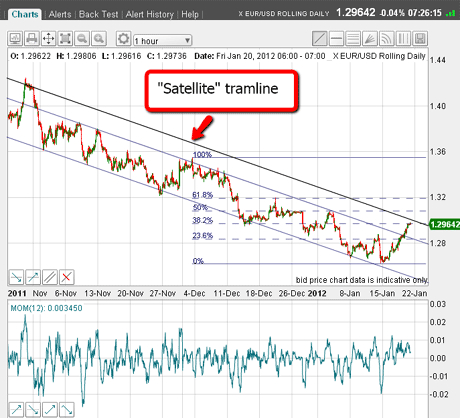
(Click on the chart for a larger version)
I have drawn on this familiar chart the upper 'satellite' tramline, which takes in the important 1.42 high.
It passes very close to the market this morning, which has broken above my central tramline very convincingly.
This satellite line should represent strong resistance.
But let's examine the form of the rally, as it can give us clues as to the possible extent of the rally:
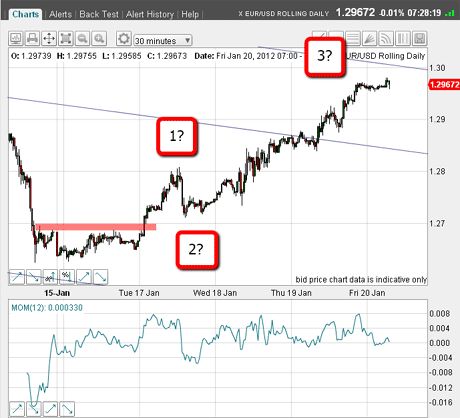
(Click on the chart for a larger version)
I have labelled a possible Elliott wave count as waves 1,2, and incomplete 3. If this labelling is correct, we shall see a dip in a wave 4, then a rally to new highs in a wave 5.
If this pans out, it would indicate a more substantial rally over the next few weeks/months. According to Elliott, five-wave moves are always in the direction of the larger trend.
But of course, we must bear in mind that we are still in a major downtrend and it may be a normal but sharp - bear-market rally in an A-B-C pattern. If so, the current rally will make a top and then fresh declines will follow.
But the sharpness of the rally looks to me as a third wave in a five-wave sequence.
This morning, my money is on this interpretation, so I will be looking for a 4th wave decline, then a basing for a resumption of the rally.
But short-term traders will be looking to take profits around here for a nice 300 pip gain as the market has hit the 38% Fibonacci retrace of the move down from the early December high (see top chart).
Of course, most people will disbelieve the possibility of a major rally here. We have got used to the notion of a collapsing euro, surely?
But that is precisely how major trends get started: first confusion, then slow acceptance, then total agreement at the tops where conditions are ripe for another trend-change!
Human nature never changes, does it?
I have been ignoring the Dow and gold recently, but these markets are entering crucial zones and I will cover them next week.
If you're a new reader, or need a reminder about some of the methods I refer to in my trades, then do have a look at my introductory videos:
The essentials of tramline trading
An introduction to Elliott wave theory
Advanced trading with Elliott waves
Don't miss my next trading insight. To receive all my spread betting blog posts by email, as soon as I've written them, just sign up here .
Get the latest financial news, insights and expert analysis from our award-winning MoneyWeek team, to help you understand what really matters when it comes to your finances.
John is is a British-born lapsed PhD physicist, who previously worked for Nasa on the Mars exploration team. He is a former commodity trading advisor with the US Commodities Futures Trading Commission, and worked in a boutique futures house in California in the 1980s.
He was a partner in one of the first futures newsletter advisory services, based in Washington DC, specialising in pork bellies and currencies. John is primarily a chart-reading trader, having cut his trading teeth in the days before PCs.
As well as his work in the financial world, he has launched, run and sold several 'real' businesses producing 'real' products.
-
 The graphene revolution is progressing slowly but surely
The graphene revolution is progressing slowly but surelyEnthusiasts thought the discovery that graphene, a form of carbon, could be extracted from graphite would change the world. They might've been early, not wrong.
-
 How Javier Milei led an economic revolution in Argentina
How Javier Milei led an economic revolution in ArgentinaFollowing several setbacks, Argentine president Javier Milei's pro-market reforms have been widely endorsed in a national poll. Britain will need the same
-
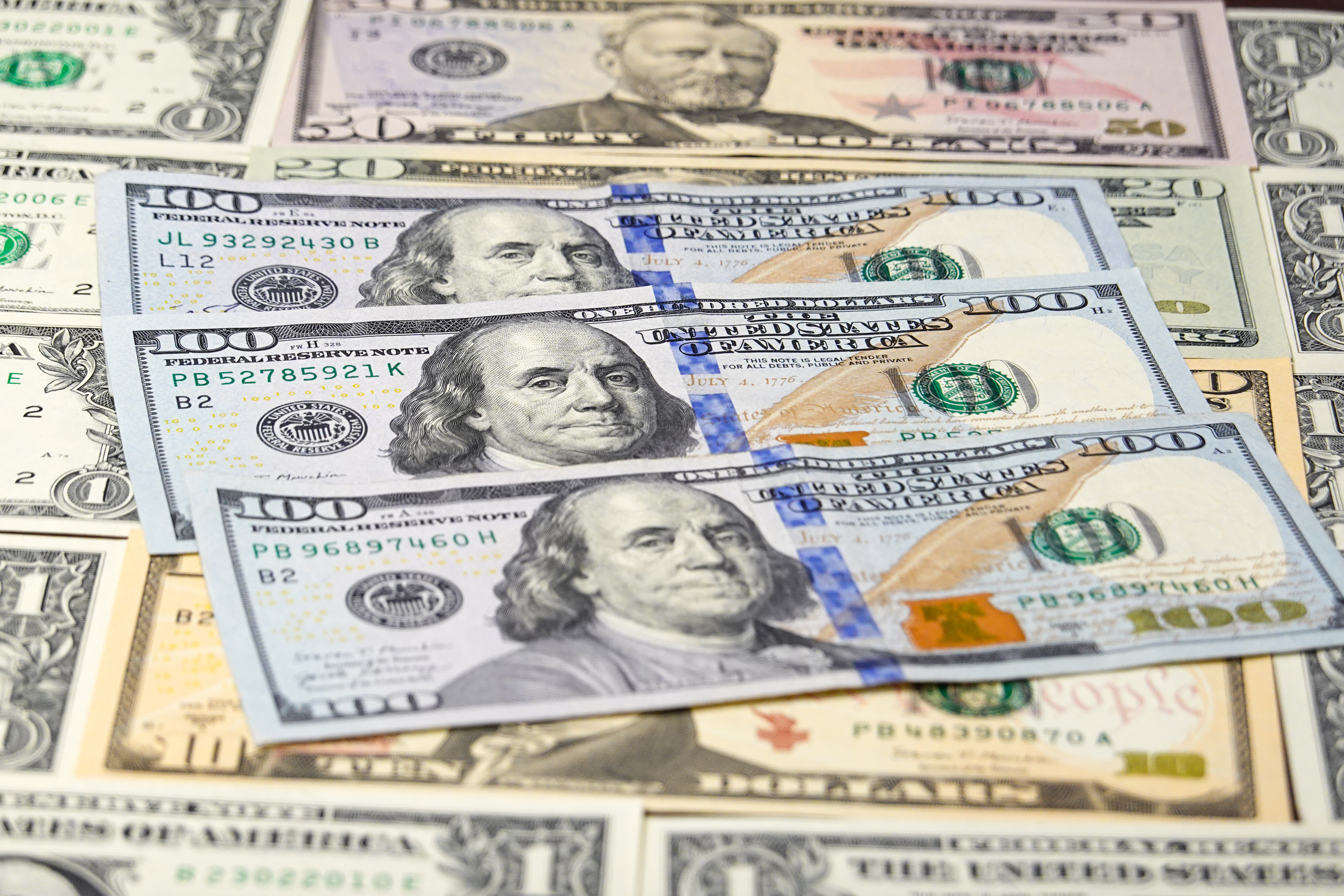 The challenge with currency hedging
The challenge with currency hedgingA weaker dollar will make currency hedges more appealing, but volatile rates may complicate the results
-
 It's time to back the yen, says Dominic Frisby
It's time to back the yen, says Dominic FrisbyThe Japanese yen has been weak for a long time, says Dominic Frisby. That may soon change.
-
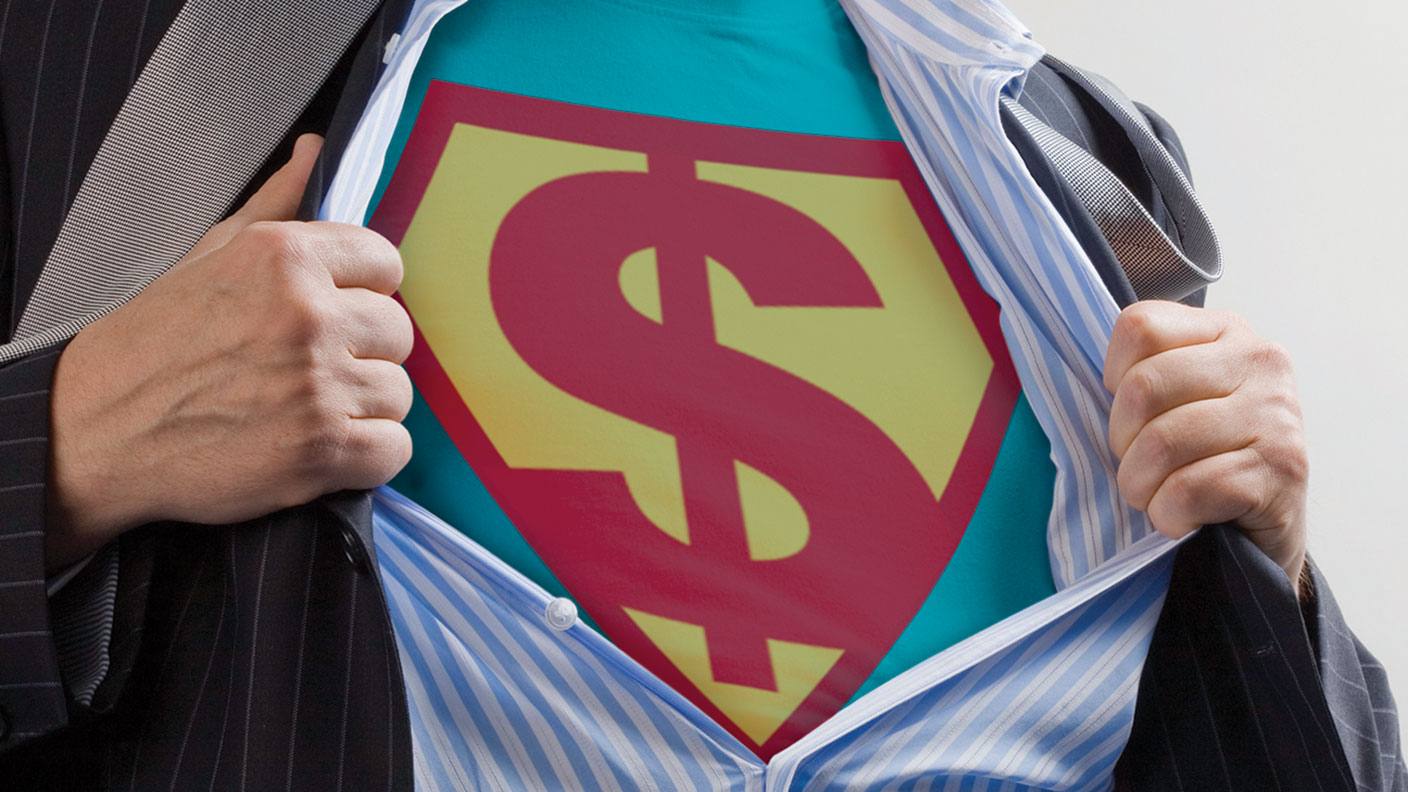 Why a strong dollar hurts – and what you can do about it
Why a strong dollar hurts – and what you can do about itAnalysis The US dollar is at its strongest level in 20 years. That’s bad news for most investment assets, says John Stepek – here’s why
-
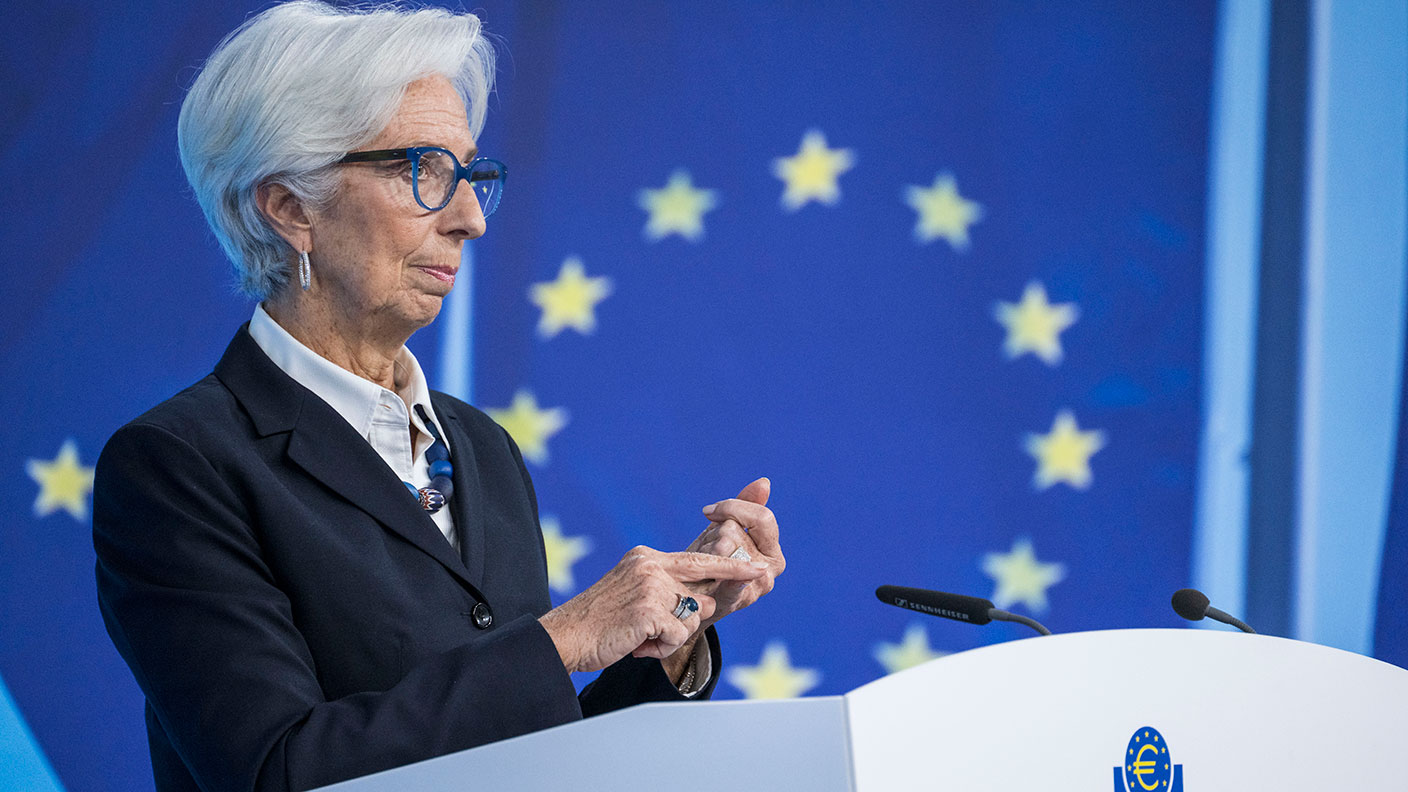 Could a stronger euro bring relief to global markets?
Could a stronger euro bring relief to global markets?Analysis The European Central Bank is set to end its negative interest rate policy. That should bring some relief to markets, says John Stepek. Here’s why.
-
 HubSpot: a tech stock set to tumble
HubSpot: a tech stock set to tumbleTips US tech stocks have had a fantastic couple of years. But this year is unlikely to be so bullish for high-fliers that can’t turn big profits.
-
 What does the future hold for central bank digital currencies?
What does the future hold for central bank digital currencies?Briefings Many of the world's central banks – including the Bank of England – have expressed an interest in creating their own digital currencies. Shivani Khandekar looks at the state of play in central bank digital currencies.
-
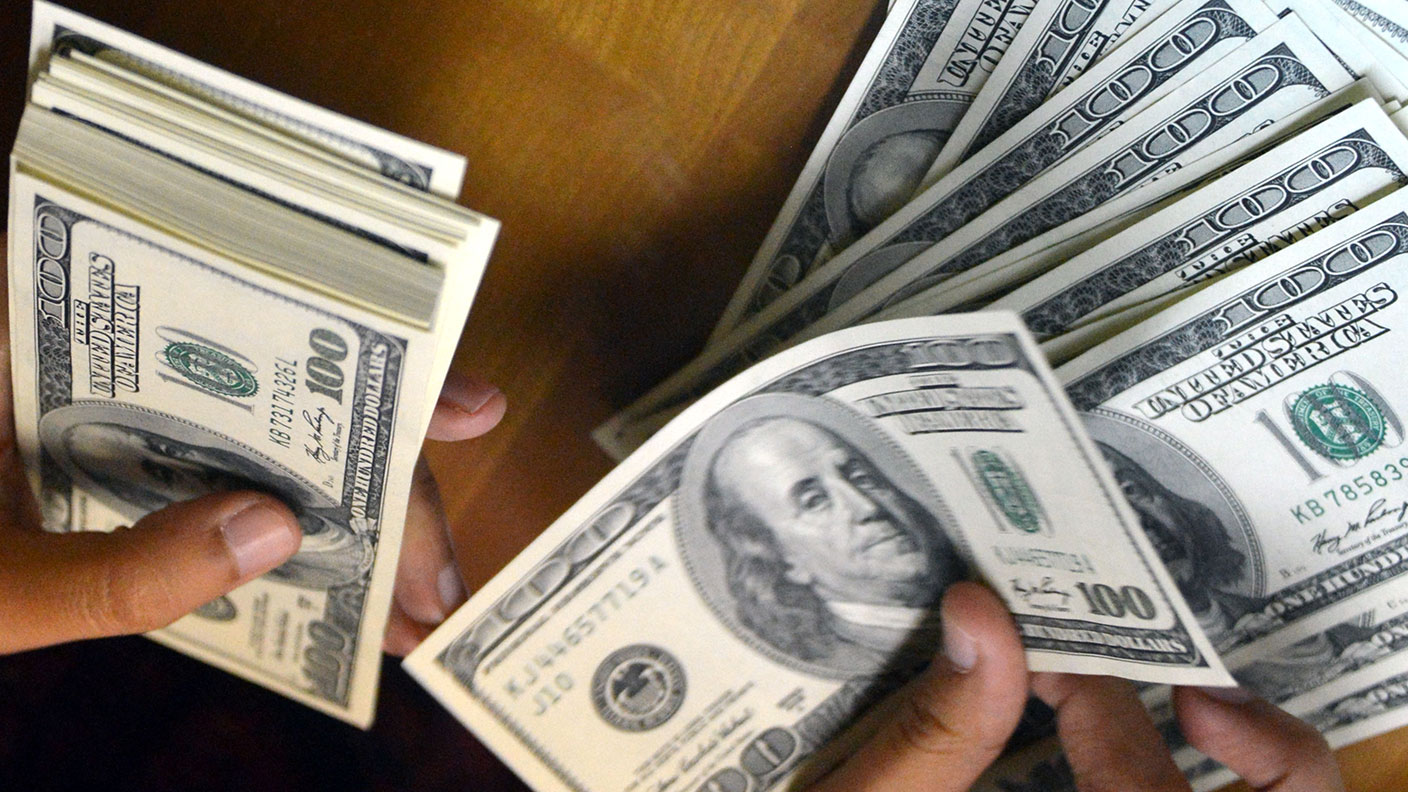 Will the market crash again? Watch the US dollar for clues
Will the market crash again? Watch the US dollar for cluesOpinion One of the biggest driving factors behind the market’s recent big sell-off was the bounce in the US dollar. John Stepek explains why the price of the dollar matters so much, and why investors should keep a keen eye on it.
-
 The US dollar’s days as the world's most important currency are numbered – it’s official
The US dollar’s days as the world's most important currency are numbered – it’s officialFeatures Central bankers reckon the dollar's days as the world’s reserve currency are numbered. But what could replace it? John Stepek takes a look at Bank of England governor Mark Carney's cunning plan.